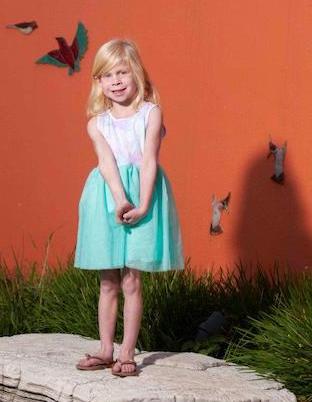Though genetic testing didn’t generate answers, it still gave young Grace a fighting chance

Grace underwent the first of many surgeries at just 5 days old.
When 5-year-old Grace Holbrook was born, she was diagnosed with a congenital diaphragmatic hernia and congenital heart disease. At just 5 days old, she underwent surgery to repair the hole in her diaphragm. But she was still in bad shape.
“The problem with this hernia is that the lungs can’t develop, and when you combine bad lungs with a bad heart, it’s just a disaster,” says Liz Holbrook, Grace’s mom. “We were told that no baby with her combination of conditions had ever survived—they just didn’t know how to help these babies.”
Grace’s doctors thought then-novel genome sequencing may unlock the secret to successfully treating her, or at least reveal the cause of her rare double diagnosis and whether it would shorten her life. Her journey was documented in a 2017 Time magazine article.
“They had told us that for a baby to have two congenital defects as massive as Grace’s, it would be very rare to not find some sort of genetic disorder,” says Liz.
The weeks the Holbrooks waited for the results were a blur. The family was in limbo for the first month of Grace’s life, wondering if she would ever get to go home. And while the waiting was agony, they were unaware of exactly how much was riding on the outcome— the lack of a genetic component meant Grace would be eligible for life-saving open-heart surgery.
“I knew that the genetic testing was important to understand if she was eligible for heart surgery, but I didn’t really realize at the time how make-or-break it that was,” Liz says.
Once DNA mapping ruled out any genetic conditions, Grace’s open-heart surgery was scheduled. Pediatric surgeon Nick Saenz, MD, told Liz and her husband, Tristan, that the path forward was not going to be easy, but if they were willing to fight, he and his team would fight alongside them to give Grace a chance. Grace underwent heart surgery at Rady Children’s at only 1 month old.
“They felt strongly that in order to proceed with something like open heart surgery—something major that would put Grace through a lot—they needed to ensure that there was not a genetic finding that was incompatible with life,” says Liz. “It was the biggest relief that we could have.”
Grace ultimately spent 90 days in the NICU at Rady Children’s and still had an uphill battle once she got home. Grace suffered from a variety of ongoing issues in her early years and had physical delays in her motor skills. The Holbrooks enlisted the help of physical and occupational therapists, plus a feeding therapist since Grace was sent home with a feeding tube and couldn’t take anything by mouth. She also had numerous follow-up appointments with cardiologists, gastroenterologists, surgeons and other medical professionals.
Now five years out from her ordeal, Grace is a shy girl with a sweet smile and infectious laugh who likes mermaids and unicorns. Her prognosis is good, and she is expected to live a normal life. Aside from routine pediatrician visits, she sees her cardiologist only once a year.
“We still consider so much of the team at Rady Children’s to be an extended part of our family. Every time we get the opportunity to see her surgeons and doctors, it really does just feel like this happy moment, that they were a part of saving her life and giving us the little girl that she is today,” says Liz. “She may need intervention at some point for a couple of things in her heart, but certainly nothing that would alter her quality of life or her ability to be the active little girl that she is,” Liz adds. “She’s a healthy, happy, vibrant 5-year-old.”
Published in the Winter 2023 issue of Healthy Kids Magazine